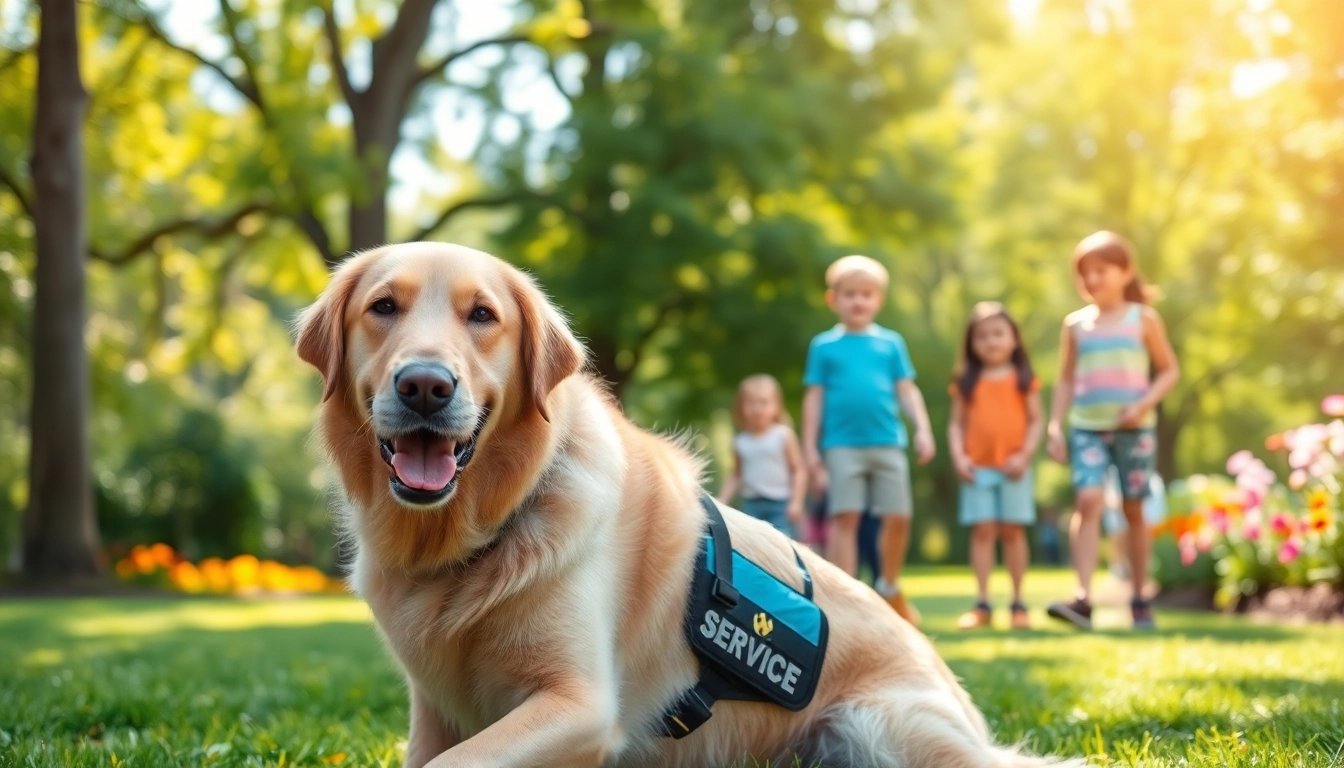What Are Autism Service Dogs?
Definition and Purpose
Autism service dogs are specially trained assistance dogs that provide support to individuals diagnosed with autism spectrum disorder (ASD). These dogs are not just companions but are critical members of the treatment team, assisting in various ways to manage the challenges associated with autism. Their primary purpose is to enhance the overall quality of life for both the individual and their families by providing emotional support, safety, and social interaction. By serving in this capacity, autism service dogs can significantly improve the emotional and social development of individuals with autism, creating a bridge to the outside world.
Types of Autism Service Dogs
There are various types of autism service dogs, each trained for specific tasks that cater to the unique needs of individuals with autism. The most commonly recognized categories include:
- Mobility Assistance Dogs: Trained to aid individuals with mobility challenges, ensuring safe navigation in social settings.
- Emotional Support Dogs: Focus on providing comfort during moments of anxiety or distress, offering a calming presence.
- Social Interaction Dogs: Encourage social interactions by attracting attention and prompting conversations in public places.
- Safety Dogs: Help prevent wandering by providing physical restraint in crowded or unfamiliar environments.
How They Help Individuals with Autism
Autism service dogs assist individuals in numerous ways, creating a supportive environment tailored to their unique challenges. They enable individuals to feel secure as they interact with their surroundings, can help reduce anxiety and negative behaviors, and provide sensory stimulation. Additionally, the presence of these dogs can aid in improving speech and communication skills, encouraging social interactions, and promoting independence in activities of daily living.
Benefits of Autism Service Dogs
Emotional Support and Stability
One of the most significant benefits of having an autism service dog is the emotional support they provide. These dogs foster a sense of stability amid the unpredictability and stress associated with autism. By being a constant presence, service dogs help individuals manage their emotions and cope with stressors that may arise during social situations.
Improving Social Interactions
Autism service dogs act as social facilitators. Their presence can encourage individuals to engage more readily in social interactions and help promote communication skills. For instance, a child with autism may find it easier to initiate conversations or friendships when accompanied by their support dog, as the dog serves as a social icebreaker and a source of comfort.
Reducing Anxiety and Stress
Many individuals with autism experience elevated levels of anxiety, particularly in crowded or overwhelming environments. Autism service dogs can dramatically reduce this anxiety by providing a calming influence. They are trained to recognize when their handler is becoming anxious or stressed and can initiate comforting behaviors, such as deep pressure therapy or simply lying close beside them, helping both children and adults navigate challenging situations with greater ease.
Training Process for Autism Service Dogs
Basic Training Requirements
The training of autism service dogs is comprehensive and layered. Basic training usually includes obedience commands such as sit, stay, come, and down, along with socialization in various environments. This foundational training is crucial, as it ensures that the dog can respond appropriately to commands and maintain composure in different public settings.
Specialized Skills for Autism Assistance
Beyond basic obedience, many autism service dogs are trained in specialized skills that cater to the unique needs of individuals with autism. Some of these skills include:
- Alerting to Signs of Distress: Training dogs to recognize non-verbal cues that indicate anxiety or distress in their handler.
- Safety Techniques: Teaching dogs to create a physical barrier in crowded areas or to lead individuals away from threatening situations.
- Comforting Behaviors: Instilling the ability to execute calming actions such as providing physical pressure or nudging during moments of panic or anxiety.
Certification and Legal Guidelines
Certification of autism service dogs is crucial to ensure that they meet specific public access requirements. Recognized organizations typically provide certification for service-dog teams, comprising the dog and its handler. Furthermore, legal guidelines under the Americans with Disabilities Act (ADA) specify that service dogs must be trained to perform tasks directly related to the disability of the handler and must have public access rights. Understanding these legal frameworks is essential for families seeking to integrate autism service dogs into their lives.
Choosing the Right Autism Service Dog
Considerations for Selection
Selecting the right autism service dog is a highly individualized process. Parents and caregivers must consider several factors, including the child’s specific needs, the dog’s breed suitability, temperament, and size. It’s essential to assess how the dog will handle various environments and whether it can adapt to the unique challenges posed by autism.
Matching Dogs with Individual Needs
A successful partnership between an individual and an autism service dog relies heavily on matching the dog’s skills and temperament with the individual’s specific needs. This may involve several assessments to determine the child’s behavioral patterns, anxiety triggers, and social preferences. For instance, a child who requires mobility assistance might benefit significantly from a larger, more robust breed, while another may thrive with a smaller, more nurturing dog.
Where to Find Reputable Sources
Families searching for autism service dogs should seek out reputable organizations specializing in training and placing these dogs. It’s critical to conduct thorough research on potential service dog providers, including assessing their training programs, success rates, and testimonials from other families. Ensuring that the organization follows ethical breeding and training practices is also essential, as it reflects their commitment to matching dogs with their rightful handlers effectively.
Ongoing Support and Resources
Daily Care and Maintenance
The maintenance and daily care of a service dog are paramount in ensuring its health and efficacy in assisting its handler. This includes regular grooming, veterinary care, exercise, and mental stimulation. Owners should establish routines that incorporate these elements alongside the daily activities of the individual with autism to ensure a harmonious living environment.
Community Resources for Owners
Numerous organizations and communities provide ongoing resources and support for families with autism service dogs. These may include local support groups, training workshops, and educational resources aimed at enhancing the overall experience of being a service dog handler. Connecting with these communities can be invaluable for sharing experiences, challenges, and advice on enhancing the bond between the handler and their service dog.
Connecting with Supportive Organizations
Supportive organizations can offer critical resources, from providing information on local laws and rights to facilitating networking opportunities with other families and handlers. Many organizations also focus on ongoing education about autism and service dogs, creating a platform for continual learning and improvement.








